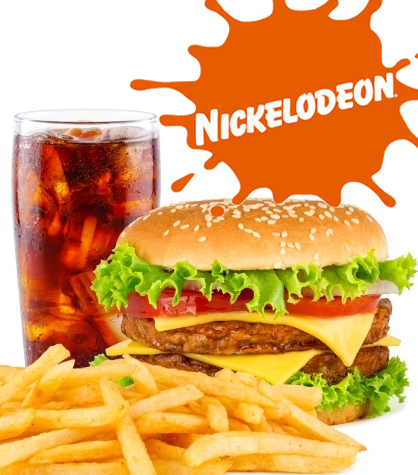Nickelodeon Declines to Dump Junk Food Advertising
Childhood obesity is on the rise, and so is concern over what our children are eating. With Walt Disney Company’s decision to ban television ads for foods that do not meet its nutritional standards by 2015, pressure is on for its competitor Nickelodeon to follow suit. The child-geared cable channel, however, has thus far staunchly refused, even in light of the plea letter four U.S. senators sent the company early June. Nickelodeon believes nutritional standards are the ballpark of regulators and food companies, and not Hollywood, reported the New York Times and NaturallySavvy.com.
“As an entertainment company, Nickelodeon’s primary mission is to make the highest quality entertainment content in the world for kids,” the company declared in a letter reply to the senators, revealed the New York Times. “That is our expertise. We believe strongly that we must leave the science of nutrition to the experts.”
The letter called for Nickelodeon to “implement a clear policy to guide the marketing of food to children on Nickelodeon’s various media platforms, including the advertisements on your channels, Internet sites, and mobile platforms.”
According to a 2013 report from the Yale Rudd Center for Food and Policy, the children’s channel behemoth accounts for more than 25 percent of food ads viewed by 2- to 11-year-olds, plus is first among 12- to 17-year-olds. The majority of these ads are for unhealthy junk foods. In fact, nearly 70 percent of all food ads on Nickelodeon promote junk food.
The Viacom-owned company is clearly thinking about its bottom line. The children’s channel has seen its food advertising decline by 45 percent since 2008, due in part to inside attempts to decrease advertising for some sugar-filled drinks and high-fat foods and in part of self-regulation by food businesses.
After movies and toys, food is Nickelodeon’s third largest advertising sector, comprising around 18 percent of annual sales. At a June Capitol Hill meeting, Viacom lobbyists set forth these numbers, asserting that their three channels — Nick, Nick Jr. and TeenNick — are far more dependent on advertising than the Disney Channel, which only permits restricted sponsorships.
Margo Wootan, director of nutrition policy at the Center for Science in the Public Interest, admits that the number of food advertisements on the channel has declined. “Things are moving in the right direction,” she said. “They’re just moving way too slowly.”
A 2012 study by the center discovered that 69 percent of the food ads on Nickelodeon featured foods classified as unhealthy by the center. This figure is in comparison to 2005’s 90 percent.
Wootan strongly disagreed with Nickelodeon’s stance that entertainment companies should not be the ones to decide nutritional standards.
“They can’t tell that Airheads candy are unhealthy without having a Ph.D. in nutrition?” she asked. “We’re not expecting perfect standards, but we’re expecting some standards.”
That is not to say that Nickelodeon has completely ignored the issue of child health. The children’s channel has devoted 10 percent of its programming time to health messaging, plus limited the licensing of some of its characters on some junk foods and supported Worldwide Day of Play.
Currently, roughly 17 percent of all children between 2 and 19 are obese, a problem compounded by junk food advertising. A 2011 study conducted in Australia discovered that children under the age of 8 are incapable of understanding the underlying commercial nature of television ads and are extremely susceptible to its persuasive methods. Advertisers expend about $950 million each year on ads targeting children under 12.
The American Academy of Pediatrics has been seeking a junk food advertising ban for years. In a 2006 policy statement, the AAP asked Congress to “implement a ban on junk-food advertising during programming that is viewed predominantly by young children.” In 2011, the organization issued another policy statement, maintaining that the high number of junk food advertisements that children and teens are bombarded with has an effect on them, and that progress in defeating childhood obesity will require a substantial shift in how we recognize advertising exposure as a risk factor for obesity.

LadyLUX



